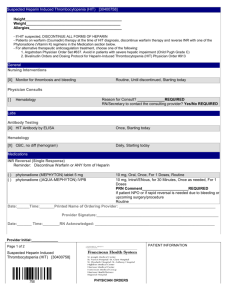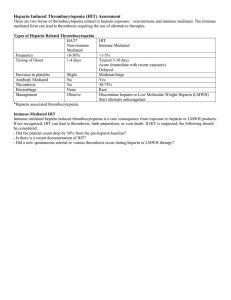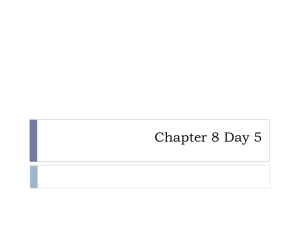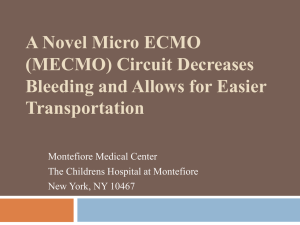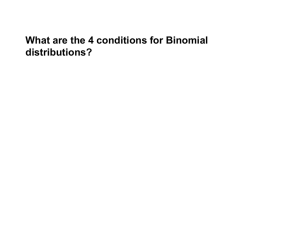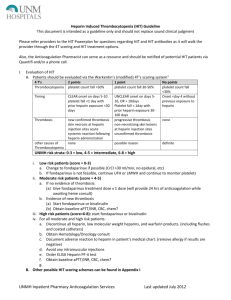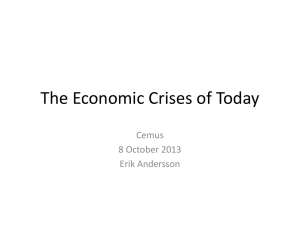Multicenter epidemiological study on the incidence of heparin
advertisement
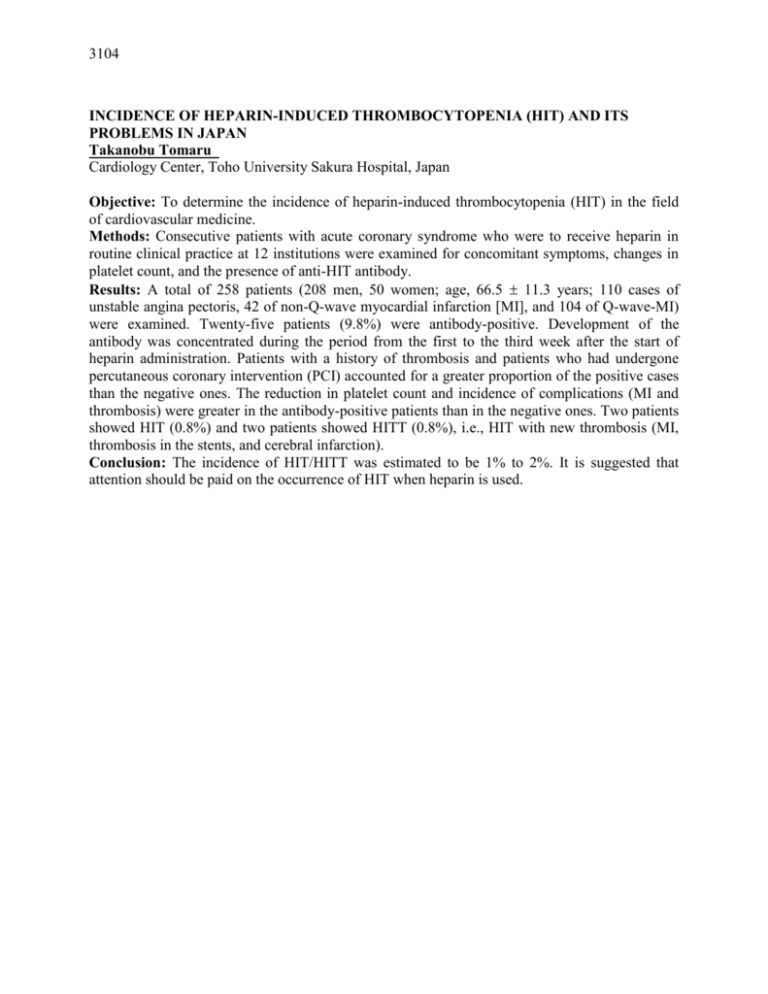
3104 INCIDENCE OF HEPARIN-INDUCED THROMBOCYTOPENIA (HIT) AND ITS PROBLEMS IN JAPAN Takanobu Tomaru Cardiology Center, Toho University Sakura Hospital, Japan Objective: To determine the incidence of heparin-induced thrombocytopenia (HIT) in the field of cardiovascular medicine. Methods: Consecutive patients with acute coronary syndrome who were to receive heparin in routine clinical practice at 12 institutions were examined for concomitant symptoms, changes in platelet count, and the presence of anti-HIT antibody. Results: A total of 258 patients (208 men, 50 women; age, 66.5 11.3 years; 110 cases of unstable angina pectoris, 42 of non-Q-wave myocardial infarction [MI], and 104 of Q-wave-MI) were examined. Twenty-five patients (9.8%) were antibody-positive. Development of the antibody was concentrated during the period from the first to the third week after the start of heparin administration. Patients with a history of thrombosis and patients who had undergone percutaneous coronary intervention (PCI) accounted for a greater proportion of the positive cases than the negative ones. The reduction in platelet count and incidence of complications (MI and thrombosis) were greater in the antibody-positive patients than in the negative ones. Two patients showed HIT (0.8%) and two patients showed HITT (0.8%), i.e., HIT with new thrombosis (MI, thrombosis in the stents, and cerebral infarction). Conclusion: The incidence of HIT/HITT was estimated to be 1% to 2%. It is suggested that attention should be paid on the occurrence of HIT when heparin is used.
